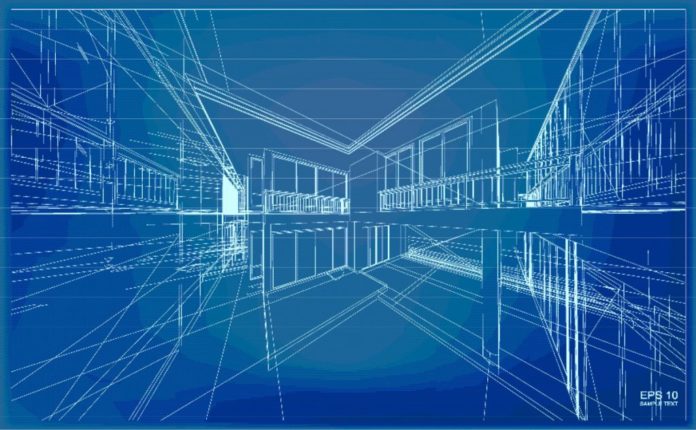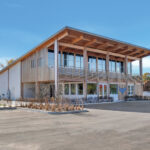The owner/founder of The High Road Design Studio provides indispensable budgeting advice for retail and dispensary operators TO create unique, impactful interiors.
“How much will it cost me to design my dispensary?”
I hear this question many times a week, and it’s a difficult one for any designer to answer on a whim. Your design team—often composed of your architecture team (including engineers), interior/retail designer, lighting designer, graphic designer, landscape architect, and general contractor—is tasked with creating something unique to your needs and your business. They are creating a physical space that will have a psychological impact on every person who steps through your doors. They are providing the bricks and mortar for your brick-and-mortar. They are figuring out how to make your space speak your brand language to your patients, customers, and staff. They are designing spaces that ensure your employees sell more and your customers buy more. And they are humans, juggling a number of factors and challenges in order to bring it all to life.
Although your design team may follow a similar design process with each of their projects, the end result is a mix of many things, some of which are tangible and others of which are not. Understanding what goes into your design team’s fees and services will help shed some light on this critical part of your business’s life and help you wrap your head around realistic expectations for your investment in the design of your cannabis retail business.
Interior design is a professional service.
Interior design is not a widget. Retail design is definitely not a widget. And, cannabis retail design is in no way, shape, or form a widget. Over the past two years, I have worked with cannabis retailers in nine different states and have yet to find two markets that could be called “the same.” Even projects within the same state can be very different based on local regulations. This fact fundamentally affects one’s ability to set a fixed fee for services and expect it to be the right solution for the client or the design business.
The designs you pay good money for have to be buildable. (Adios, 40-foot-tall suspended, rotating, aquaponic aquarium in your 200-square-foot lobby). They also have to meet a host of code and regulatory requirements. (How much space do you have to leave for that ADA-compliant public restroom? Probably more than you want to, but that’s the law.) They have to meet a budget (usually). And in the cannabis industry, retail design has to meet a number of regulations that aren’t developed with the ideal retail experience in mind.
Retail design isn’t a mass-produced physical product that can be recreated each time for the same cost—especially in the cannabis industry. Each project requires its own unique blend of expertise, skills, services, best practices, and deliverables. Tailoring a fee for each individual project provides for a better client experience, allowing the design professional to be more flexible in how they solve the needs of the client and contribute to the success of the project. When you are investing a great deal of time and money in your business, you want to be sure you are getting the right solution for you—not a canned, pre-packaged set of services that works best for your designer’s business needs or that is a suitable solution for “most clients like you.”
Which leads nicely into the second nugget of information to keep in mind…
Design fees are often based on the scope of services needed for the project.
The fact of the matter is, there are many variables that go into the build-out and execution of a well-designed cannabis retail space, just like any other commercial design project. Your design team has many things to consider when putting together the appropriate mix of services and deliverables for your new cannabis retail space.
If renovating, what is the existing condition of the space?
Was the location previously used as a main street retail space, an auto repair shop, a warehouse? Does your space even exist, or are you building from the ground up? The condition of the existing space plays a major role in determining the complexity, cost, and potential for success of your project.
A big part of this is code compliance: What has to be done for your space to comply with current local building codes? This variable is something your design team has no control over. Codes based on occupancy, ingress/egress, energy, ADA accessibility and fire/safety drive everything about your project. They are laws that must be followed in order to legally build or modify a space. Code compliance issues can be very tough for a client to come to terms with, especially if they didn’t take this into consideration from the beginning.
For example, a single unisex ADA-compliant restroom can cost $8,000-$10,000. Many clients assume the existing restroom in their space meets code “because I saw a disabled person using it just last week.” Unfortunately, that doesn’t mean it meets current code. Bringing an existing facility up to code takes time and money—sometimes a larger portion of a budget (and of literal space) than a client ever envisioned. Clients can become frustrated and deflated over spending money on something that doesn’t help sell more product. But, that’s the law.
My advice is to have a feasibility study done on the space you are contemplating early on in your planning. It will help set your expectations for the rest of the project and may be a major factor in deciding whether the space is even a good fit for your cannabis retail needs.
Will you need a building permit in order to execute what your designer designs?
Double check with your city to find out what things you can and can’t do to a commercial space without a building permit. Altering an existing space without a permit when one is needed is never recommended. Building permits ensure designs are safe and protect everyone—sometimes you, the business owner, most of all. If anything you are doing requires a building permit, you will need a licensed architect to take your interior design drawings and produce the drawings and documentation needed for the permit(s). If you are looking at a new building or tenant suite, it’s a definite yes.
What design services will you need to meet your goals?
A designer can provide services as basic as conceptual renderings and mood boards to help sell investors or community leaders on your dispensary concept. A designer also can provide services as comprehensive as a full-service design program including brand positioning and identity, interior design from space planning to documentation, lighting design, audio/visual integration, FF&E (furniture, fixtures & equipment) specifications, fabrication and procurement, environmental graphic design, exterior storefront design, and ongoing merchandising management services. The extent of services a client needs often is determined by their business model, budget, and timeline.
Just how bad-ass a cannabis retailer do you want to be?
Let’s be honest. You don’t want only a super-efficient, highly functional dispensary. You also want a photogenic, jaw-dropping, braggadocious space that is the envy of your competition and the icing on the cake of your customers’ experience. You want to create a space that helps you attract new customers, creates buzz, and breeds cult-like loyalty to your brand. You want a design that gives you priceless images of a can’t-be-missed retail experience to unveil to the eyes of the world on your websites, social media, and advertising. You want to create something that gives you and your employees a sense of pride that resonates in every customer interaction.
Design is a good investment, yes. But it is also a status symbol. Of all of the things you have to invest in to get your business off the ground—permits, licenses, consultants, legal costs, insurance, security, high rent, insane taxes—this is one area where spending money can actually be seen and make you more successful. Design is a differentiator; design is good business.
I see the ways my clients are forced to spend money in this industry, just to be compliant and stay open. They pay the “cannabis premium” on everything: higher rent, higher insurance, higher workers’ compensation rates. They fork over money annually to their state’s marijuana programs just so they can keep their doors open and retain their licenses. These costs typically do nothing to help them improve their business. They don’t help them sell more products. They don’t help them educate their customers. They don’t add to the retail experience in any way.
When you invest in cannabis retail design, you are doing something that will benefit your business—every day. A high-volume dispensary in a regulated market can easily generate $5 million or more a year in sales, so it makes sense that a good retailer will spend a few hundred thousand up front to build out a space that can support that kind of business. I recently designed a custom concentrate bar for clients who wanted to showcase their popular and profitable line of products in a professional, branded, and eye-catching (aka dollar-catching) manner. They spent more than $300 per square foot on this area of their showroom because they understood the value it would bring to the retail experience and the amount of product they would sell from it. So, what about their ROI? Their concentrate sales will exceed $1 million this year. The investment in the new bar paid for itself in less than a month.
What is it worth to you to know your retail space is designed to maximize your revenue, throughput, employee efficiency, and customer comfort—not just on your opening day, but every day you are open? What is it worth to you to have a retail space that will look just as good in two years as it does today? What is the value to your brand of a space that is memorable, iconic, and beautiful?
When designed properly and in a way that meets your business’s unique needs, design should not be looked at as a cost, but instead as an investment. Major retailers don’t spend hundreds of thousands of dollars designing their retail locations and branding because they like to. They do so because design and branding will make or break their business. They do it because the investment adds tremendous value to their brand in the eyes of investors as well as customers.
In retail, design cannot be an afterthought. If you are going to be successful as a retailer, you must plan for design from the beginning. Retaining the right design team and engaging them in your planning as early as possible will help ensure you allocate the right budget for their services, get the proper services for your needs and goals, and execute a successful retail design project for your business to enjoy for a long time to come.
What’s the cost to your business if you don’t do things the right way? That’s where a designer can be invaluable.
Megan Stone, founder and owner of The High Road Design Studio, is a cannabis retail designer and consultant. The High Road’s mission is focused on elevating the cannabis industry through professional interior design. Megan formed The High Road in 2013, and since then has worked with cannabis business owners and license applicants in nine states on projects for medical and adult-use retail stores.












